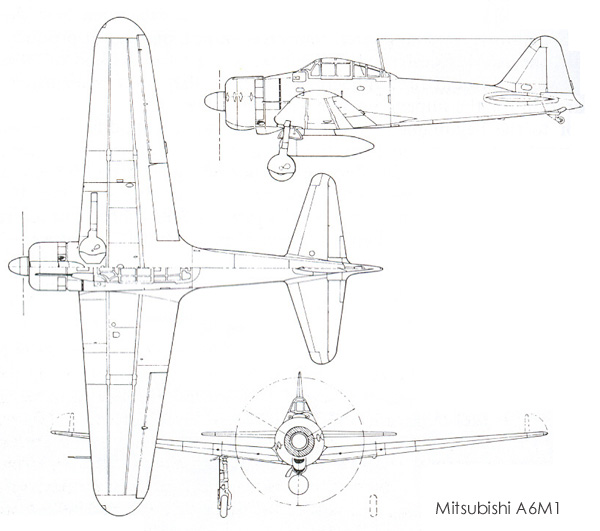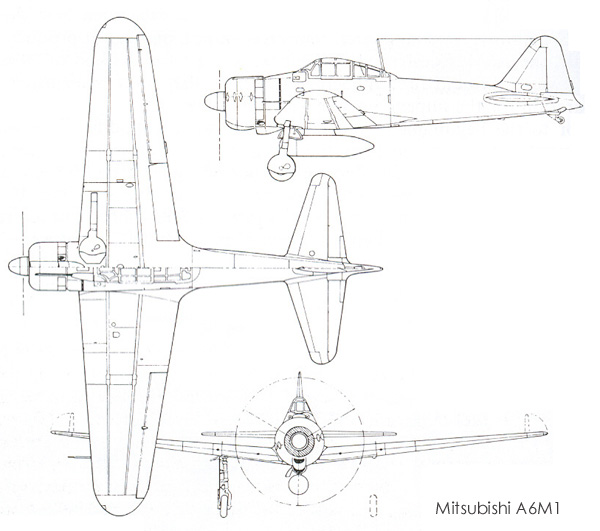

To satisfy these demanding requirements, Mitsubishi designer Jiro Horikoshi and his team focused specifically on reducing airframe weight as much as possible. In May 1937, the Japanese naval staff issued preliminary specifications for a fighter to fly from aircraft carriers. Key to the Zero's potent performance was weight. Yet for almost two more years the ZEKE, as the Allies code-named it, remained an ominous threat. The Japanese were losing experienced pilots and aircraft faster than they could replace them. The loss of four Japanese aircraft carriers at Midway underscored a deadly trend. The Reisen totally outclassed all Allied fighter aircraft for the first six months of the war until American carrier forces stopped the Japanese in the Coral Sea and at Midway in May and June 1942. Japanese naval aviators flew 328 combat-ready A6M2 Reisens against American forces at Pearl Harbor and in the Philippines. Combat trials began in China during July 1940 and by fall, Zero pilots's felled nearly 100 Chinese aircraft for the loss of only two Zeros to friendly fire. Design work began in 1937 when the Japanese Navy staff directed Mitsubishi and Nakajima to submit proposals for a new aircraft to replace the Mitsubishi A5M carrier fighter (Allied codename CLAUDE). The two companies built more than 10,000 Zeros between March 1939 and August 1945. Mitsubishi designed the Zero fighter but co-produced the airplane with Nakajima. No other aircraft surpasses the Mitsubishi A6M Reisen ("ree-sin," Japanese for Zero Fighter) as the symbol of Japanese air power during World War II. The horizontal stabilizer was reinforced to withstand the stress of pulling-out from a steep dive, and hardware was installed in the wings to carry two 150-liter (40 gal) drop tanks.


The centerline fuel tank was replaced with a bombrack that carried a single 250 kg (551 lb) bomb. When the Navy directed Mitsubishi to redesign the Zero to drop bombs, the A6M7 was born.

Dive bombers that could operate from small flight decks were urgently needed. By late 1944, following tremendous defeats at Midway, the Philippine Sea, and Leyte Gulf, Japan's large-deck carrier fleet was almost wiped out. The bomber proved too large and landed too fast to operate from small-deck aircraft carriers.
A6m zero wing specs series#
The Yokosuka D4Y Suisei (Comet) JUDY dive bomber entered series production in the spring of 1943 (replacing the obsolete Aichi D3A VAL used at Pearl Harbor). Mitsubishi developed the Zero 63 to fill a gap in dive-bombers that developed late in the war. The two companies built 10,449 Zeros between March 1939 and August 1945-more than any other Japanese aircraft. K., designed the Zero Fighter but both Mitsubishi and Nakajima produced the airplane. Jiro Horikoshi, Chief Engineer at Mitsubishi Jukogo K. After 1942, better Allied training and tactics, superior aircraft, and the loss of experienced Japanese pilots made the Zero much less formidable. All Allied pilots feared and respected the Zero fighter early in the war. No other Japanese aircraft surpasses the Mitsubishi A6M Reisen ("ree-sin") as the symbol of Japanese air power during World War II. For more information, visit the Smithsonian's Terms of Use page. View Manifest View in Mirador Viewer Usage Conditions May Apply Usage Conditions Apply There are restrictions for re-using this media. IIIF provides researchers rich metadata and image viewing options for comparison of works across cultural heritage collections. Usage Conditions May Apply Usage Conditions Apply There are restrictions for re-using this media.


 0 kommentar(er)
0 kommentar(er)
